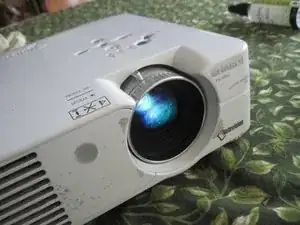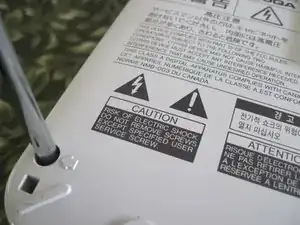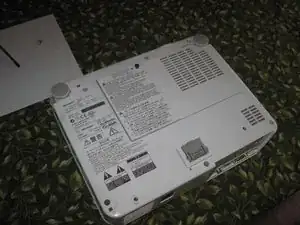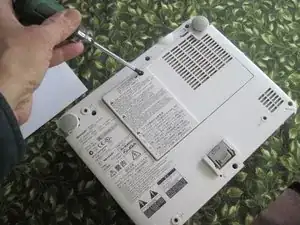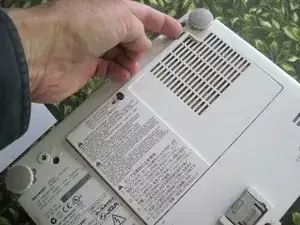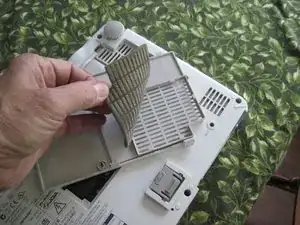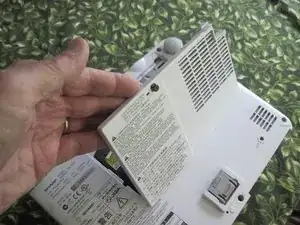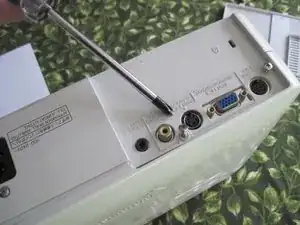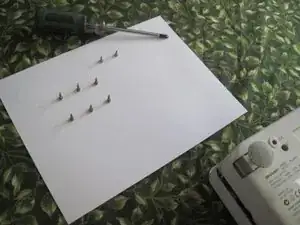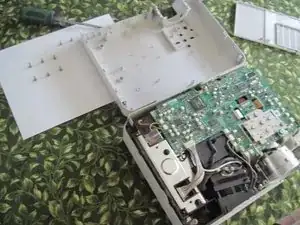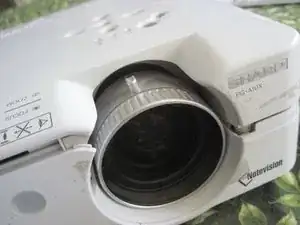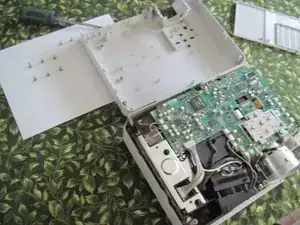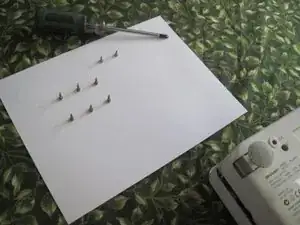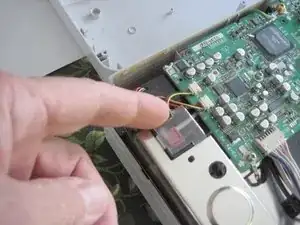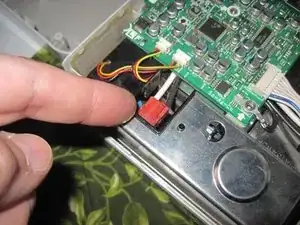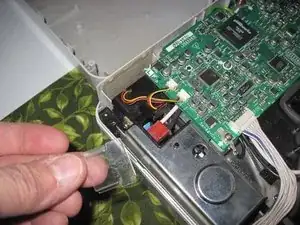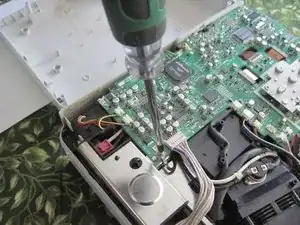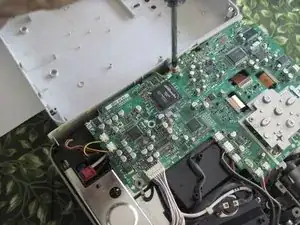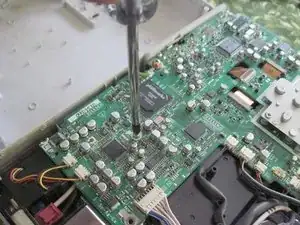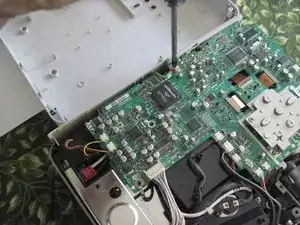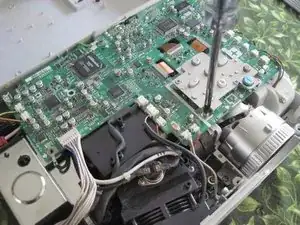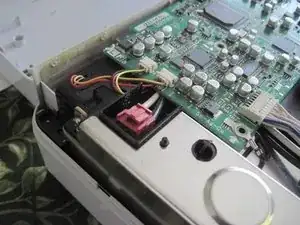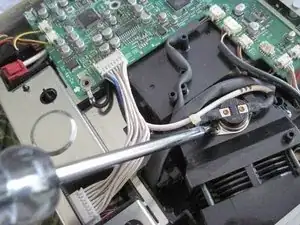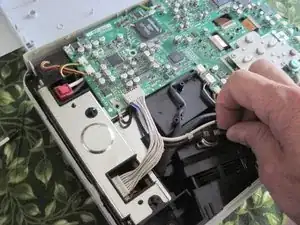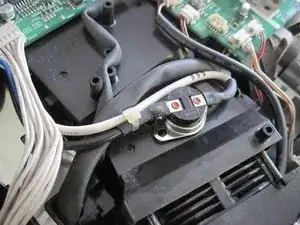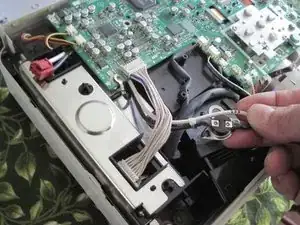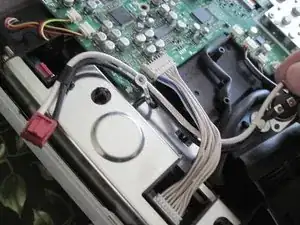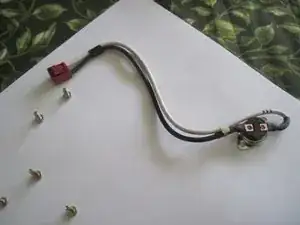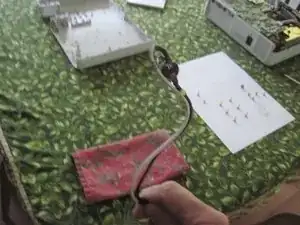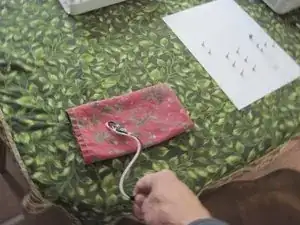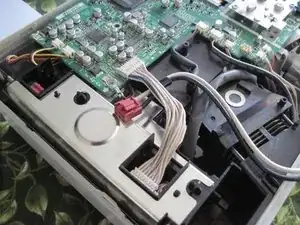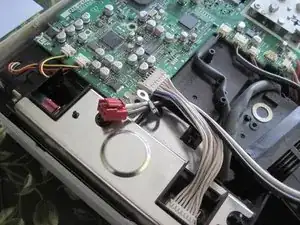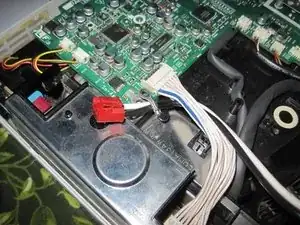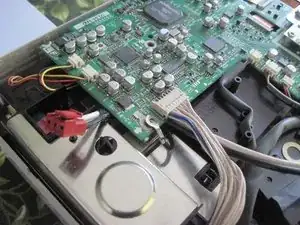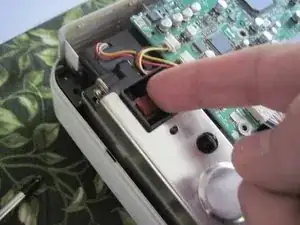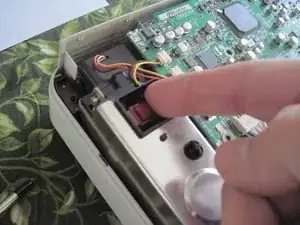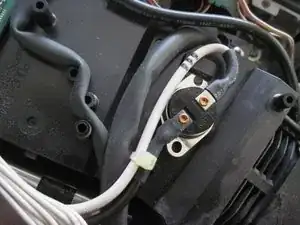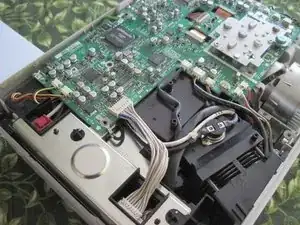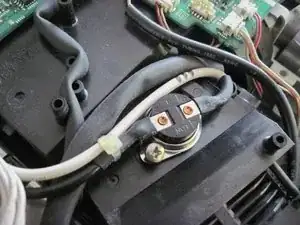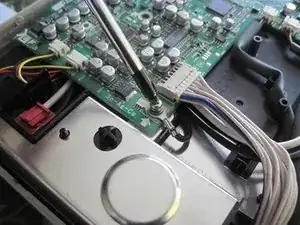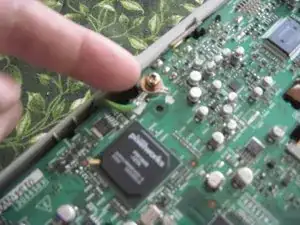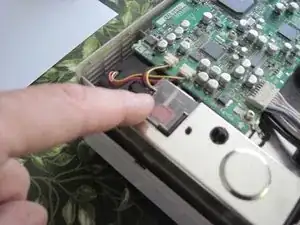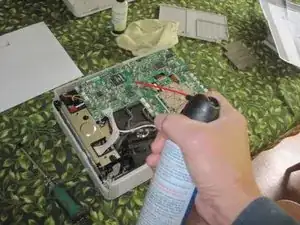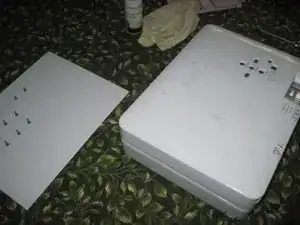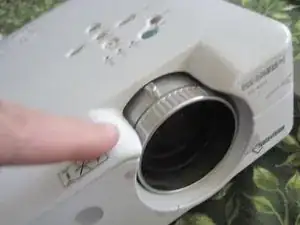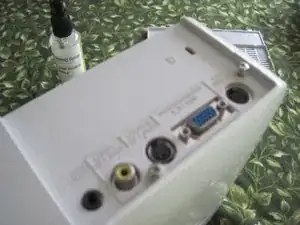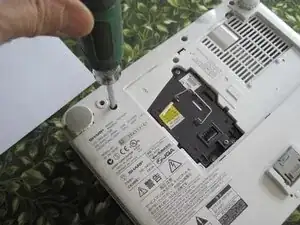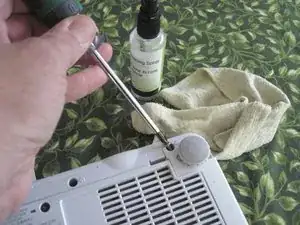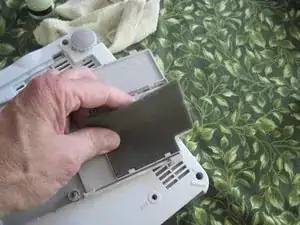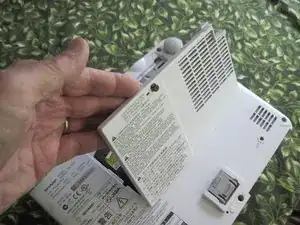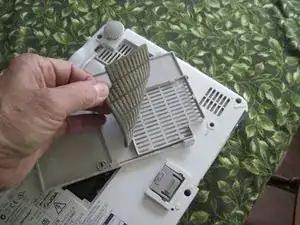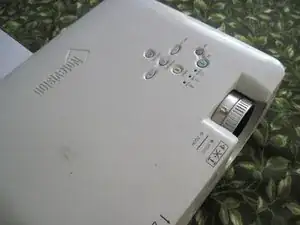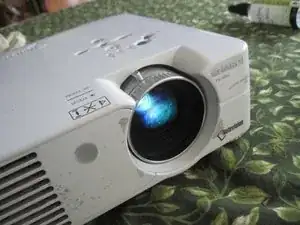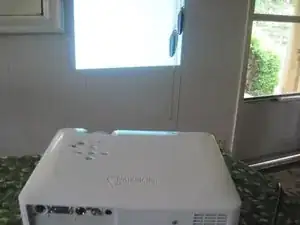Einleitung
Your projector stops working abruptly, and the lamp goes out. No indicator lights showing either. You have either inadvertently pulled out the plug or the thermal protection fuse has popped. This procedure shows how to repair this.
Werkzeuge
Ersatzteile
-
-
We are assuming that since you are using "iFixIt" then you will want to ignore the warning about electrical shocks. Unplug the projector from the power (no danger of shocks now) and remove the six 0.5" phillips head screws.
-
-
-
Although not exactly necessary for this procedure, it's a good idea to remove the lamp access panel too at this point. Loosen the captive phillips screw at the edge of this cover (it's black) and then pressing the catch with your finger, open the cover like a door.
-
-
-
There are two more screws to remove, the two chrome-plated phillips screws in the back-panel near the input sockets. There is another screw like these near the black power socket--it is not necessary to remove that one. Keep these two screws separate from the six longer ones you just removed in the previous step.
-
-
-
Turn the projector over (right side up). If you have not already removed the six screws from the holes (unscrewed in step one) then they should fall on the table now. Pick them up and keep track of them. With a flat-blade screwdriver (or a butter-knife) carefully work around the match joint between the case halfs until the top is free (it clips)
-
-
-
The part we are replacing, the thermal fuse, is a silver button with one black and one white wire connected to it. Both of these plug into the chassis at this red connector. Remove the clear plastic cover with a flat screwdriver.
-
-
-
There are more than four screws holding down the circuit board. You only need to remove four of them--just enough to raise the corner of the board that is over the thermal fuse wires. Two of these screws also have round wire-lugs under them: the one on the lower left and the one in the top middle.
-
-
-
One of the screws, the back one in the middle, is larger than the others. Just remember what holes they came out of to put them back. Four screws: 1) front left corner, 2) back edge in the middle, 3) one halfway between these two, 4) one next to the lens near the control buttons. The circuit board does not come off.
-
-
-
Now you can slide the red connector for the fuse back off it's socket: use a flat blade screwdriver to release the catch. Also, remove the single screw holding the fuse assembly itself (The business end) to the black fan-box. Keep your screws organized!
-
-
-
Gently lift the circuit board front left corner and work the black and white wires of the thermal fuse out from beneath it. Note that they go under the circuit board but over the black connecting wire on the corner screw hole, and under the wire harness between the circuit board and chassis. No need to remove the wire harness.
-
-
-
This is the cool part. You can replace the thermal fuse you just removed with a new one, OR it is possible to "re-set" the fuse for another go. Hold the assembly by the plug in one hand, set the button on a padded surface on the table (silver side down) raise it up about 18" and SLAP the button part DOWN on the pad. One "whap".
-
-
-
Whether you fixed the fuse with a "whap" or whether you bought a new part assembly (part #QCNW-B110WJZZ, Bi-metal PCB--Google it, you'll find one like the one in the picture) snake the fuse wires and connector back under the wire harness, over the black wire and under the corner of the circuit board (gently pry the corner of the board up).
-
-
-
Once you have snaked the black and white wires for the thermal fuse under the board, over the black wire and under the board wiring harness, you can slide the connector back onto the prongs. Push it till it clicks.
-
-
-
The business-end of the thermal fuse goes back on the black fan housing. One ear slips under a black plastic clip. The other ear is screwed down with the screw you removed back in step 9.
-
-
-
Replace the four screws you removed from the circuit board in steps 6 and 7. Remember, one of the (under the green wire) is a bigger screw than the others. The front left corner one, near the thermal fuse, also holds down a black wire lug. Replace the clear plastic cover over the red connector to the thermal fuse too.
-
-
-
Now is a good time to blow some dust away from the vents. There is an intake vent in the back and on the side, and also a couple fans. Use compressed air. Place the top case carefully over the bottom case and work it into place all the way around: it snaps into place.
-
-
-
Replace the two plated screws at the connector panel on the back, and then turn the projector upside-down and replace the six case screws in the deep holes on the bottom. Tight, but not too tight--remember this is plastic.
-
-
-
The lamp access panel has a foam air filter in it that is easy to clean. It's also easy to tear! So be careful, remove the foam from the access panel. You can carefully vacuum the dirt with a vacuum cleaner, blow it with compressed air, or even wash it with water and dry it if you like. Just be careful not to tear it. Put it back and close the lid.
-
-
-
Now you can plug it in. The little indicator lights should light up. If they light up green, steady or blinking, one or two, just let it be. The lamp will eventually come on, and the fan too. Press the "off" button to shut-down as usual after the lamp comes on. If a red "power" indicator comes on, that's fine too. You can press the "on" button.
-
I have done this to my projector several times over the past few years and it worked every time. Takes about 15-20 minutes.
